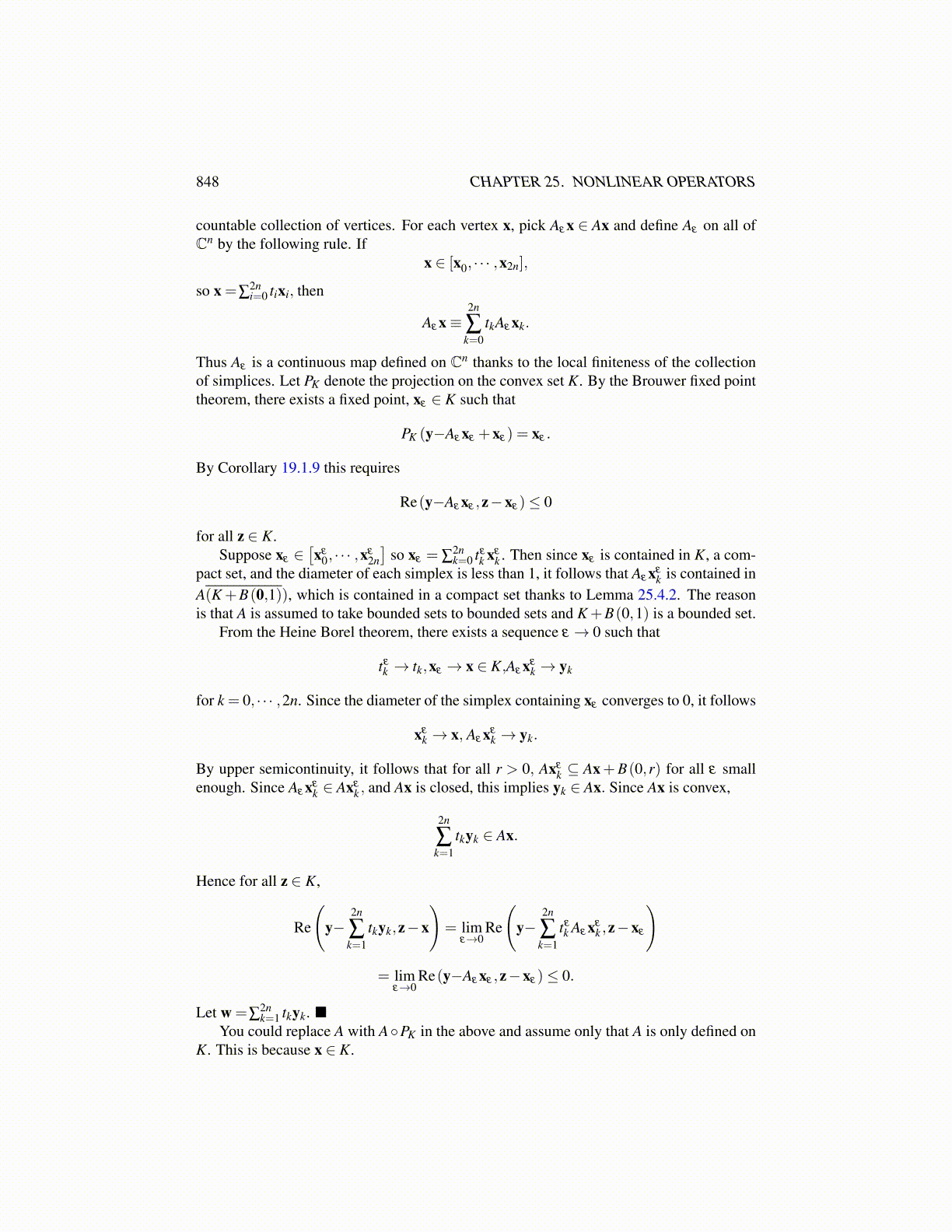
848 CHAPTER 25. NONLINEAR OPERATORS
countable collection of vertices. For each vertex x, pick Aε x ∈ Ax and define Aε on all ofCn by the following rule. If
x ∈ [x0, · · · ,x2n],
so x =∑2ni=0 tixi, then
Aε x≡2n
∑k=0
tkAε xk.
Thus Aε is a continuous map defined on Cn thanks to the local finiteness of the collectionof simplices. Let PK denote the projection on the convex set K. By the Brouwer fixed pointtheorem, there exists a fixed point, xε ∈ K such that
PK (y−Aε xε +xε) = xε .
By Corollary 19.1.9 this requires
Re(y−Aε xε ,z−xε)≤ 0
for all z ∈ K.Suppose xε ∈
[xε
0, · · · ,xε2n
]so xε = ∑
2nk=0 tε
k xεk . Then since xε is contained in K, a com-
pact set, and the diameter of each simplex is less than 1, it follows that Aε xεk is contained in
A(K +B(0,1)), which is contained in a compact set thanks to Lemma 25.4.2. The reasonis that A is assumed to take bounded sets to bounded sets and K +B(0,1) is a bounded set.
From the Heine Borel theorem, there exists a sequence ε → 0 such that
tεk → tk,xε → x ∈ K,Aε xε
k → yk
for k = 0, · · · ,2n. Since the diameter of the simplex containing xε converges to 0, it follows
xεk → x, Aε xε
k → yk.
By upper semicontinuity, it follows that for all r > 0, Axεk ⊆ Ax+B(0,r) for all ε small
enough. Since Aε xεk ∈ Axε
k , and Ax is closed, this implies yk ∈ Ax. Since Ax is convex,
2n
∑k=1
tkyk ∈ Ax.
Hence for all z ∈ K,
Re
(y−
2n
∑k=1
tkyk,z−x
)= lim
ε→0Re
(y−
2n
∑k=1
tεk Aε xε
k ,z−xε
)
= limε→0
Re(y−Aε xε ,z−xε)≤ 0.
Let w =∑2nk=1 tkyk.
You could replace A with A◦PK in the above and assume only that A is only defined onK. This is because x ∈ K.